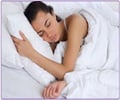Diagnosis of Bruxism
Diagnosis of Bruxism is based on the patient’s dental history and a dental examination.
Dentist usually detects or suspects bruxism during a routine checkup, when the worn out condition of the teeth is spotted. Wear associated with grinding is most evident on the molars, which are at the back of the mouth. The diagnosis is generally based on the patient's dental history and a careful dental reexamination.
The examination will help the dentist to determine whether the grinding is caused by anatomical (misaligned teeth) or psychological (stress) factors. With that information, the dentist draws an effective treatment plan.
A recently introduced device called the BiteStrip is a disposable self-use home test for Sleep Bruxism and might help diagnose bruxism before damage appears on the teeth. The device is a miniature electromyograph machine that senses jaw muscle activity while the patient is asleep. A dentist can establish the frequency of bruxing, which helps in choosing a treatment plan. Anyone having major occlusal rehabilitation should be aware that bruxism can and does ruin dental work.
The Polysomnography (PSG) is an overnight test that is done in a laboratory that takes continuous multiple measurements, while a patient is asleep, to document abnormalities in the sleep cycle.
On a Polysomnogram features of Bruxism are evident on the electromyographic studies of the jaw muscles. Each episode shows up as increased muscle tone of the jaw muscles with or without an accompanying arousal. Repeated arousals from sleep can lead to sleep deprivation.










